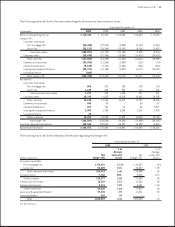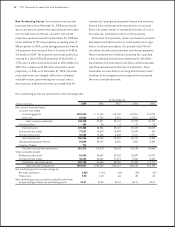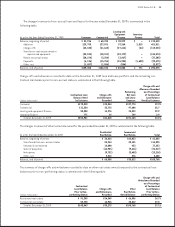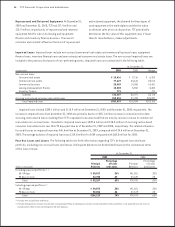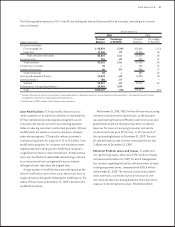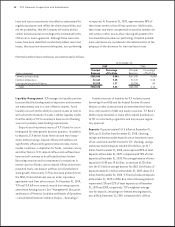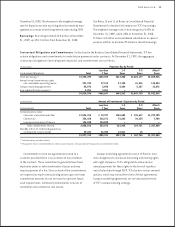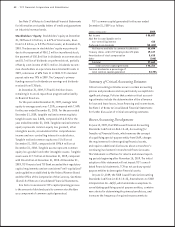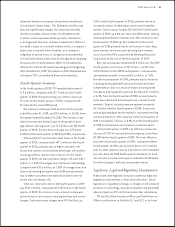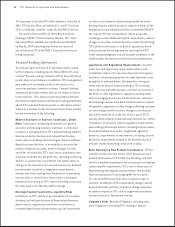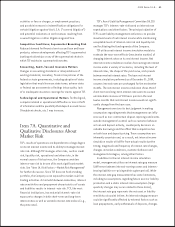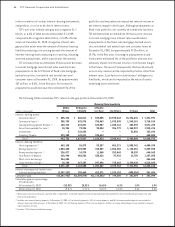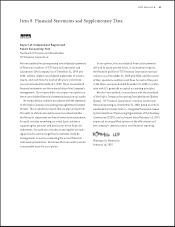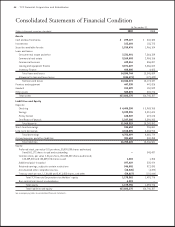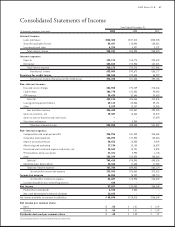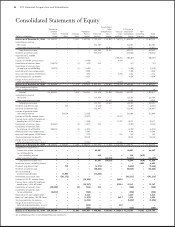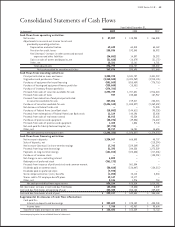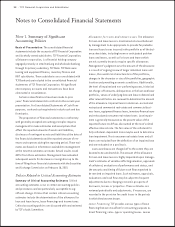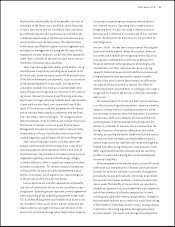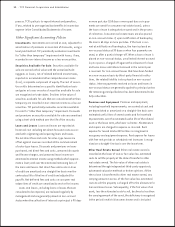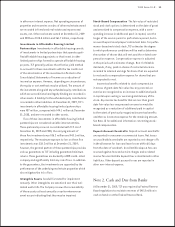TCF Bank 2009 Annual Report Download - page 59
Download and view the complete annual report
Please find page 59 of the 2009 TCF Bank annual report below. You can navigate through the pages in the report by either clicking on the pages listed below, or by using the keyword search tool below to find specific information within the annual report.
2009 Form 10-K : 43
activities or fees or charges, or employment practices,
and possible increases in indemnication obligations for
certain litigation against Visa U.S.A. (“covered litigation”)
and potential reductions in card revenues resulting from
covered litigation or other litigation against Visa.
Reduced demand for nancial services and loan and lease
products; adverse developments affecting TCF’s supermarket
banking relationships or any of the supermarket chains in
which TCF maintains supermarket branches.
Changes in accounting standards or interpretations of
existing standards; monetary, scal or tax policies of the
federal or state governments, including adoption of state
legislation that would increase state taxes; adverse state
or Federal tax assessments or ndings in tax audits; lack
of or inadequate insurance coverage for claims against TCF.
Technological,
computer related or operational difculties or loss or theft
of information and the possibility that deposit account losses
(fraudulent checks, etc.) may increase.
Item 7A. Quantitative and
Qualitative Disclosures About
Market Risk
TCF’s results of operations are dependent to a large degree
on its net interest income and its ability to manage interest-
rate risk. Although TCF manages other risks, such as credit
risk, liquidity risk, operational and other risks, in the
normal course of its business, the Company considers
interest-rate risk to be one of its most signicant market
risks. See “Item 1A. Risk Factors – Market Risk Management”
for further discussion. Since TCF does not hold a trading
portfolio, the Company is not exposed to market risk from
trading activities. A mismatch between maturities, interest
rate sensitivities and prepayment characteristics of assets
and liabilities results in interest-rate risk. TCF, like most
nancial institutions, has material interest-rate risk
exposure to changes in both short-term and long-term
interest rates as well as variable interest rate indices (e.g.,
the prime rate).
TCF’s Asset/Liability Management Committee (ALCO)
manages TCF’s interest-rate risk based on interest rate
expectations and other factors. The principal objective of
TCF’s asset/liability management activities is to provide
maximum levels of net interest income while maintaining
acceptable levels of interest-rate risk and liquidity risk
and facilitating the funding needs of the Company.
TCF utilizes net interest income simulation models to
estimate the near-term effects (next twelve months) of
changing interest rates on its net interest income. Net
interest income simulation involves forecasting net interest
income under a variety of scenarios, including the level of
interest rates, the shape of the yield curve, and spreads
between market interest rates. The base net interest
income simulation performed as of December 31, 2009,
assumes interest rates are unchanged for the next twelve
months. The net interest income simulation shows that if
short-term and long-term interest rates were to sustain
an immediate increase of 100 basis points in the next
twelve months that net interest income would not signi-
cantly change from the base case.
Management exercises its best judgment in making
assumptions regarding events that management can inu-
ence such as non-contractual deposit repricings and events
outside management’s control such as customer behavior
on loan and deposit activity, counterparty decisions on
callable borrowings and the effect that competition has
on both loan and deposit pricing. These assumptions are
inherently uncertain and, as a result, net interest income
simulation results will differ from actual results due the
timing, magnitude and frequency of interest rate changes,
changes in market conditions, customer behavior and
management strategies, among other factors.
In addition to the net interest income simulation
model, management utilizes an interest rate gap measure
(difference between interest-earning assets and interest-
bearing liabilities re-pricing within a given period). While
the interest rate gap measurement has some limitations,
including no assumptions regarding future asset or liability
production and a static interest rate assumption (large
quarterly changes may occur related to these items),
the interest rate gap represents the net asset or liability
sensitivity at a point in time. An interest rate gap measure
could be signicantly affected by external factors such as
loan prepayments, early withdrawals of deposits, changes


